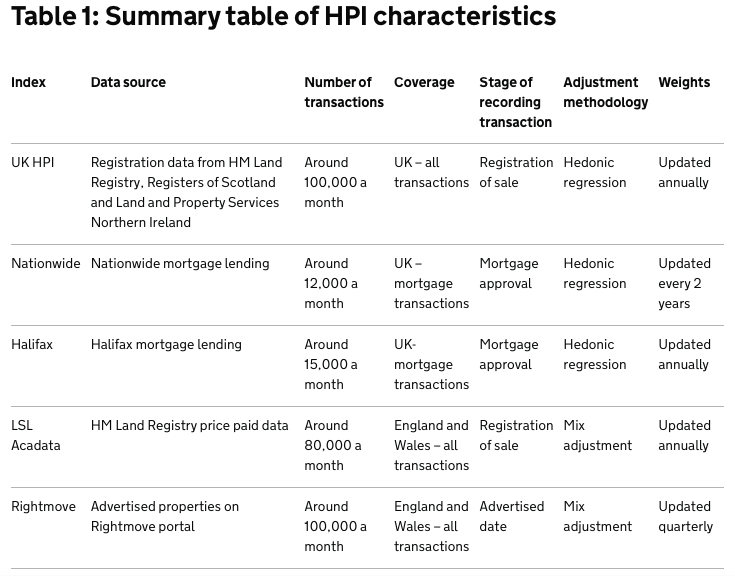
How to Turn Property Data into Stories that Sell.
Creating an engaging story about a property is vital for successful marketing and sales initiatives – but to do so requires access to historical property data.
When you are just processing facts, you only “light up” two parts of your brain, whereas when you are experiencing stories, seven parts of your brain “light up”. This is why coupling data with stories is a very powerful way to get clients emotionally invested.
Stories exist in property data – whether they are immediately apparent or not. Telling these stories in a compelling way to the buyer can be the difference that makes a difference to them.
Stories affect the brain. When someone is listening or experiencing a story, there is a dopamine release. Dopamine leads to more attention, retention, focus, and motivation to take action. There is also neuro-coupling which helps the reader or listener to associate and feel like they are in the story.
Importantly, the sales and marketing stories property data can help you tell are not confined to the state of the actual building itself. In fact, some of the most burning questions property data can answer – all of which can be fleshed out into engaging chapters in your narrative – have more to do with a property’s peripheral elements, its surrounding area and market potential.
Questions include:
- What’s the total size of the market in a particular region?
- What’s the projected economic growth of a region, county, district, borough, city, or town?
- Which areas have the highest expected gross yield value?
- Where are there most constructions coming up?
- Where are builders most in demand?
- Where do millennials prefer to live?
Knowing the answers to questions such as these will aid you in crafting compelling stories about each home that you can tell, not only in-person, but through your website, social media channels, email campaigns, property reports and other marketing materials.

How, though, do you go about turning property data into stories that sell in the first place?
Here are five steps you can follow.
5 Steps to Telling a Story with Property Data
Step 1: Find the Compelling Narrative and Do Your Research
Good stories focus on little details that combine to form a larger picture – so, firstly, you need to identify the story behind the home and then conduct research to unearth the data that reveals the details to support it.
Plain facts are boring. A good narrative, on the other hand, is captivating.
So, what makes a good narrative?
First and foremost, all stories have a protagonist and an antagonist – a hero and a foe. So, who – or rather what – is the foe in your story?
Let’s say you’re trying to sell a home located in the centre of town. Here, the foe could be the long commute to work, a lack of job opportunities, the unavailability of local amenities such as shopping centres, entertainment halls and grocery stores, poor transport links, etc.
Using accurate and reliable data about the property’s locality – or its market potential, development potential, or whatever it happens to be – you can craft a captivating, detailed story, complete with heroes and villains to hook your audience.
Step 2: Know Your Data, Where It Came From, and How It Was Calculated
This is crucial. Different sources of data can sometimes tell a different story and in some cases be – or appear to be – contradictory.
Take UK house price indices as an example. The Office of National Statistics (ONS) House Price Index (HPI) and the Halifax House Price Index can often reveal different data. Even though the general trend is usually in the same direction, there are instances where this hasn’t been the case – in fact, stark differences have been noted in the past. Throw the Nationwide HPI, the LSL Acadata HPI and the Rightmove HPI into the mix, and the picture becomes even murkier.

(Image source: gov.uk)
The reasons for these differences lie in the way each index computes house prices. The ONS HPI is based on completed housing transactions, while Halifax bases its computation on mortgage approvals. Others are based on asking prices, property valuations, and even qualitative measures that sample the opinions of Estate Agents and Surveyors. Some indices are updated quarterly, others annually, and still more biennially. In short, there is very little consistency between these data sources.
House prices are but one example – the bottom line is that to tell your story accurately, you must understand how the data was arrived at.

Step 3: Decide on the Data Points to Emphasise
Keep your story simple by focusing on a few important data points.
Let’s take the example of a property prospectus. The idea would be to put everything on one page so that your target audience doesn’t have to look at a lot of different images, data and descriptions. What you want is to get all of the basic information onto a single page so that people can decide if they are interested in getting more information.
Often, to help your clients decide, you don’t necessarily need to bombard them with all the data – all you need is to emphasise the most pertinent information. Throwing too much information at a client can have an adverse effect.
Succinct reports are the hallmark of good storytelling. So, spend some time working on your reports to ensure you provide just enough information to whet your client’s appetite without scaring them away or losing their attention.
Step 4: Organise Data Thematically
Order your data thematically as you answer the questions you set out to answer. This is especially important where you have original research.
Let’s say you ran a survey of prospective homebuyers in a particular locality and you have a treasure trove of information that you want to use to tell a story. Rather than provide a verbatim report of what each respondent had to say during the survey, it’s better to organise your report around questions that your target audience cares about.
Step 5: Organise Your Story into a Reader-Friendly Format
Research indicates that the brain learns faster and retains more information when it is presented in a visual format.

(Image source: killervisualstrategies.com)
So, the final step is to use infographics, presentations, images, charts and video as you present your data-driven stories across your website, social media, email, newsletters, reports and printed materials. This will help your clients retain the information your stories contain.
Sources of Property Data
Unfortunately, it is a well-known fact in the property industry that estate agents’ businesses are hampered by missing, inaccurate and inaccessible property data on individual properties.
So – where can real estate professionals access the data required to begin weaving compelling stories that sell?
Let’s examine a few sources.
Just about anyone seeking information starts at Google. The point here is that the key to success is learning how to use Google’s filtering tools to find the specific information you are seeking.
HM Land Registry
The HM Land Registry publishes property data in three core data sets:
- Property Price
- Transaction
- UK House Price Index
Being a government database with numerous records relating to UK properties, HM Land Registry is a great source of property data in terms of being authoritative. Unfortunately, the data sets present a steep learning curve, particularly for inexperienced agents trying to make sense of them. In fact, even seasoned industry veterans struggle reading through the spreadsheets.
UK Office of National Statistics (ONS)
Like the HM Land Registry, the ONS is an authoritative source of UK demographic data such as employment and unemployment rates, inflation, GDP, and population figures in various locations. However, just like HM Land Registry reports, ONS reports come in .csv format, are bulky and not particularly user-friendly. As anyone who has accessed ONS reports will attest, it takes a great deal of time to pore over them to garner actionable intelligence.
Property Services
There are dozens of online property services in the UK that provide users with access to property data throughout the UK. A major drawback, however, is that most services have information gaps – the data on properties is often incomplete, inaccurate, or outdated.
Sprift – The Ultimate UK Property Data Platform
Rather than wasting hours upon hours collecting less-than-perfect data from dozens of different sources, more and more property professionals today are using Sprift.
At Sprift, we source, amalgamate, and analyse the data you need, so you don’t have to.
With the most comprehensive data on any home in the UK, you can begin putting together stories that nudge your clients further down the funnel.
Our market-changing technology collates data from a wide range of trusted sources to give you the complete view of any UK property and its local area. Created by a team of property investors, developers and estate agents, Sprift is your single source of truth for UK property data – the one place where the data you need to craft stories that sell is presented in a simple, easy-to-digest format.
In fact, we can even start crafting those stories for you with our tailored, professionally presented reports that reflect your brand and company information. As you would expect, they are of the highest quality.
To date, there are over 25 million properties stored on our platform. We have produced nearly 400,000 reports for our clients and saved them more than £19.5 million worth of research hours.
Reports available include:
- Sprift dashboard: Your online dashboard
- Key Facts for Buyers: Find buyers faster
- Market Appraisal Report: The instruction winner
- Sprift Insider Data: Contains all your property data sets, exclusive to Sprift
- Bespoke Data Reports: Includes competitor analysis, market analysis, and listings analysis with full addresses
See how Sprift can help you tell a property narrative that helps you to sell more properties.
Sign up for your free trial of Sprift, or get in touch for more information.

